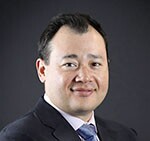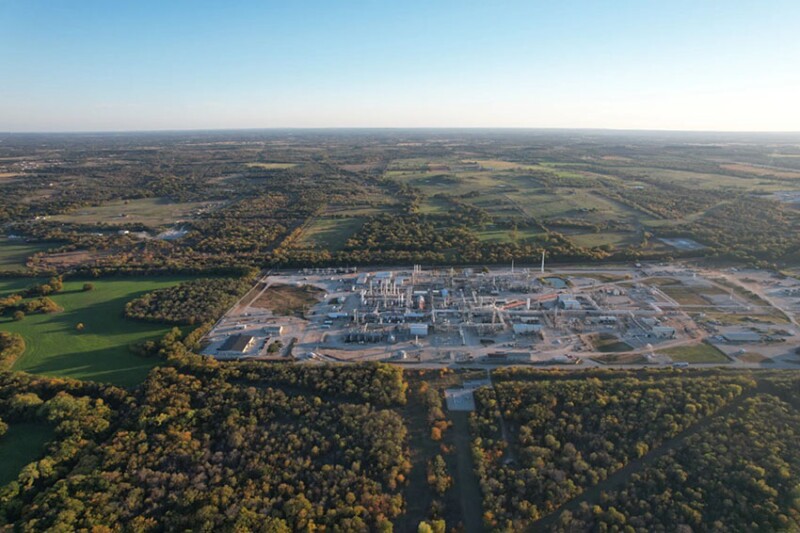Shale gas producer BKV Corp. has made the leap into the US carbon capture and storage (CCS) sector, becoming the latest upstream firm to challenge the idea that only industry giants can make significant moves in this emerging arena.
Founded in 2015 as a privately held subsidiary of Thailand’s coal and energy conglomerate Banpu, BKV and its fewer than 400 employees have quickly built the company into the 17th largest gas producer in the US. In addition to its upstream operations in the Barnett and Marcellus shales, BKV’s business model borrows from its Thai energy roots and includes ownership of two natural gas power plants in Texas.
But the firm is better known within upstream technical circles for its leadership in refracturing horizontal wells in the Barnett where it is the largest operator both in terms of acreage and flowing wells.
No stranger to diversification, BKV is now shifting its focus to CCS—a market anticipated to balloon almost fivefold from $3 billion to over $14 billion by the end of the decade. This growth is being propelled in the US by new legislation offering $85 in tax credits for each ton of CO2 sequestered, effectively turning the greenhouse gas into a valuable commodity.
The company’s inaugural CCS project, in collaboration with Dallas-based EnLink Midstream, launched this past November in Bridgeport, Texas. Called the Barnett Zero Project, BKV and its partner are targeting the sequestration of approximately 210,000 mtpa of CO2e. Hitting that target means potentially generating over $17.8 million in annual tax credits, a sum that offers a swift return on investment for those who can manage costs.
BKV has also established a new business unit called dCarbon Ventures which is leading a separate CCS joint venture in the Barnett play called Cotton Cove. The $17.6-million project, $9 million of which will be put up by BKV, is expected to begin injecting up to 45,000 mtpa by the end of next year. Beyond that, BKV and its subsidiaries have secured rights for a large-scale project spanning 21,000 acres in neighboring Louisiana which would source its emissions from the industrial and petrochemical plants around the New Orleans area.
Steering these ambitious projects is BKV’s CEO, Chris Kalnin, alongside Lauren Read, vice president of the gas company’s dCarbon Ventures. Under their leadership, BKV hopes to achieve net-zero Scope 1 and 2 emissions by next year—decades ahead of most industry reduction targets. The company is not stopping there and is ambitioning to do what most US-based operators have so far refrained from, which is to offset its Scope 3 emissions sometime next decade.
In the following Q&A, Kalnin and Read discuss the motivations behind the Barnett Zero Project, its significance in the context of independent producers, and what it signals about BKV’s broader strategy.
Editor’s note: This interview has been edited for length and clarity.
JPT: What does the Barnett Zero Project say about the role of mid-sized oil and gas producers in an area which is heavily dominated by large to supermajor-sized companies?

Chris Kalnin (CK), CEO of BKV Corp.: I’ll say a couple of things about this. The first is that we typically see more innovations from smaller companies rather than the big companies. That’s not to say big producers and the majors can’t innovate—but in terms of speed to market and ability to innovate at a rapid iterative pace, you’ve got to think about small to mid-cap companies as being the best positioned to do those things. The big disadvantage for the smaller companies is of course the capital that they can bring and sometimes the end-to-end expertise that’s required to deliver these kinds of projects.
There’s another thing to understand here about where the carbon capture space is heading.If you think about it using a two-by-two matrix, there are large hub-and-spoke projects, i.e., the big Houston-area projects taking shape onshore and offshore with large trunk lines and multiple emitters involved. While it’s true that those will typically be managed by the majors, there’s a whole other category of projects that we think are below the radar of the large E&Ps but that still need to happen in order to address climate change. These are point-to-point projects that involve small-volume but high-concentration sources with anywhere from 200,000 to 500,000 mtpa of CO2. These are the most economic projects, they’re the quickest to implement, and they allow you to build momentum relative to the bigger hub-and-spoke projects.
JPT: I’m curious to hear more about what “end-to-end” expertise implies and how it impacts the big picture you are speaking to.
CK: It’s an important dimension to all of this. You have to look at your ability to play in the overall value chain—are you going to be just a sequesterer or also a capturer? Are you a midstream company too? All this decides your ability to take part in the various CCS business models. What you will find is that there are a lot of small players out there trying to attack this space but they are picking more complex projects than us or they have some of the capabilities and need to find partners to get the rest. That includes everything from the financing to the pipeline and compression. Why BKV is unique here is that we’re very focused on those point-to-point projects and then we bring all of the capabilities.
While in this latest project EnLink is capturing the CO2, we do capture CO2 at our Cotton Cove site and then pipe it, compress it, and inject it. We’re also doing all the reservoir management. What all this says is that the folks who can innovate, play along the whole value chain, and have the balance sheet to do it will see carbon capture as a tremendous business.
JPT: How much will these carbon capture projects contribute to that rather remarkable ambition of achieving net zero on Scope 1 and 2 by next year and then with regards to Scope 3?

Lauren Read (LR), vice president of dCarbon Ventures: The short answer is a lot. But we intend to address the majority of our Scope 1 and 2 emissions—approximately 60%—by what we call our “pad of the future” project and other emissions projects. Then the balance of our emissions will be offset by the carbon capture, storage, and utilization (CCUS) business, so it represents a significant component of the overall strategy to getting those Scope 1 and 2 emissions down to zero. Then there are another 14 to 15 million mtpa of our Scope 3 emissions that we will offset solely with our CCUS business, and we plan on hitting net zero by the early 2030s.
JPT: The CCUS business—talk to me about spinning up the new wholly owned venture entity. Why go that route as opposed to simply creating a more traditional business unit within the organization?
CK: As many know, one of the biggest challenges facing small to mid-cap carbon capture niche players right now involves their financial viability. The capital markets have really been disrupted for the moment, and private funding is increasingly hard to come by.
You are left with this conundrum of having a high-growth business opportunity, but it’s capital intensive and there’s a question over what the source of funding will be. How we solved for this problem is reflected in our structure. We have the venture group, it’s in the mothership and still receives funding from the upstream business, but it’s also a bespoke business that can use a variety of different joint venture models.
LR: I would add that the model offers the best of both worlds in that we have shared services with the upstream business that supports all aspects of dCarbon ventures—so all the land, midstream, pipeline, and subsurface capabilities Chris mentioned. But we think of the relationship as symbiotic because dCarbon Ventures is really serving the upstream business too by helping it achieve its net-zero goal. And at the same time, we see it as a standalone business that can grow and provide returns to its investors and shareholders.
JPT: On growth, how are you balancing the need to capture and store your own emissions with respect to the net-zero goals while also bringing in industrial customers who want to pay you to do the same for them?
CK: We’ve got a pipeline today, no pun intended, of about 30 mtpa. This represents line-of-sight projects that we are at various stages of working on. And the vast majority of these volumes involve other folks’ CO2—not ours. So, we see that there is a tremendous growth opportunity for CCUS-as-a‑service. But it is not as linear as you are suggesting where we go from storing our volumes first to then storing theirs. Obviously, we are able to get projects off the ground sooner when we control most of the variables. That’s why the Barnett Zero and Cotton Cove projects were implemented very quickly. But these other projects are equally important and we’re progressing materially on them as well.
JPT: BKV has said the Barnett Zero Project serves as a prototype for future projects. What are some of the key components or concepts that make it an ideal template?
LR: I see the Barnett Zero Project as highly replicable for natural gas processing projects in particular because of the concentration of CO2 at these sites. But even where capture requirements are different, the sequestration and transport elements remain repeatable. That entails building the pipelines, having the CO2 experience in operating the pipeline which I think is transmissible across all projects. On the sequestration side, the things that promote repeatability include knowledge of the classic industry standards that must be followed along with the monitoring, reporting, and verification requirements from regulators.
JPT: Since you mentioned regulators, it’s been reported that new carbon capture projects may suffer from a slow approval process due to the massive jump in companies seeking those permits. What has your experience been like on this front?
LR: Regulators have been, by and large, very good to work with. There are challenges in permitting right now with a significant backlog and staffing issues on their end. But the regulators are very open and want to work with us to get projects across the finish line. I think it’s important that there has been a lot of back and forth because we are really spearheading what we see as a revolution in CCS. There are not a lot of historical projects to lean back on, and so the regulators still have some questions of their own about how things should work or what the processes should be. They are still figuring things out which means it’s important to work with them collaboratively.

JPT: How do you decide what to spend on the E&P side of the business vs. CCS? In other words, does adopting CCS come at the expense of drilling a new well(s)?
CK: That’s one of the things we’re grappling with right now. On one hand, the upstream business is our bread and butter—so you have got to keep funding that core. On the other hand, carbon capture is as we’ve highlighted as the future of this business and it’s high growth. So how do you balance the funding? I think you take a portfolio management approach. In traditional E&P, prior to the shale revolution, you had an exploration budget and a development and operating budget. You have to make a strategic decision on how much higher-risk capital you’re going to earmark for the growth.
Otherwise, if you just competed on a risk-adjusted basis, drilling a new well or performing a refrac would win all day long. But it doesn’t make sense to look at it like that, so the way we’re thinking is to first ask what’s the envelope of capital that would allow us to achieve a critical skill for our business and we work back from there. How we sequence that spending depends on where we are in the cycle, but we are always earmarking some capital towards the carbon capture business.
For example, you can see in 2023 that gas prices really collapsed but we maintained a steady investment in Barnett Zero. Our side of the project was $34 million, and BKV wrote that check regardless of the market environment. You can make a point about this being an investment in the license to operate, but we also believe in the future of the business and that you can make money by diversifying the income stream away from what is a volatile gas business.
JPT: Considering the new direction of your company against the backdrop of an evolving energy landscape and growing focus on climate matters, what message or takeaway do you hope gets across to fellow oil and gas professionals who are reading this?
LR: I speak directly with universities on this question because the science is not new to carbon capture and sequestration. The hype is new—but the science is not.
And a lot of the skills that we teach in universities for petroleum engineering, chemical engineering, geoscience, land, legal, all of these skill sets can be transferred to the study of carbon sequestration and be applied to a high growth business that’s also good for the planet. And I find within a lot of the younger generation that I talk to, that’s what they’re really looking for—a career where they can make a difference and make money. And so, that is what CCS is to me, a perfect intersection of good science, good economics, and good for the planet.
CK: My view is that there’s no industry better suited to solve the challenge of global warming than the energy industry. BKV is trying to lead the way by showing that you can do both—you can provide secure, reliable, and affordable energy and solve global warming at the same time. It’s not an either/or choice. What I would tell people is this if you want to really do something about global warming, and not just protest and throw rotten tomatoes at the industry, but actually fix the challenges that the next generation will face in a material way, then you need to get with an energy company that takes it seriously and figures out the way to do it profitably.
And what we are saying at BKV is that we are not just going to offset of Scope 1 and 2 emissions, we’re actually going to completely offset our Scope 3 emissions—meaning if you combust our gas, you’re not actually contributing to global warming. That is where we are going with this because we think standalone carbon capture makes money, that standalone E&P makes money, and in combination, the two result in an ESG impact that is spectacular. And with that I would say to look for more announcements coming in the next 12 to 24 months that will reflect the trajectory that we’re describing.


